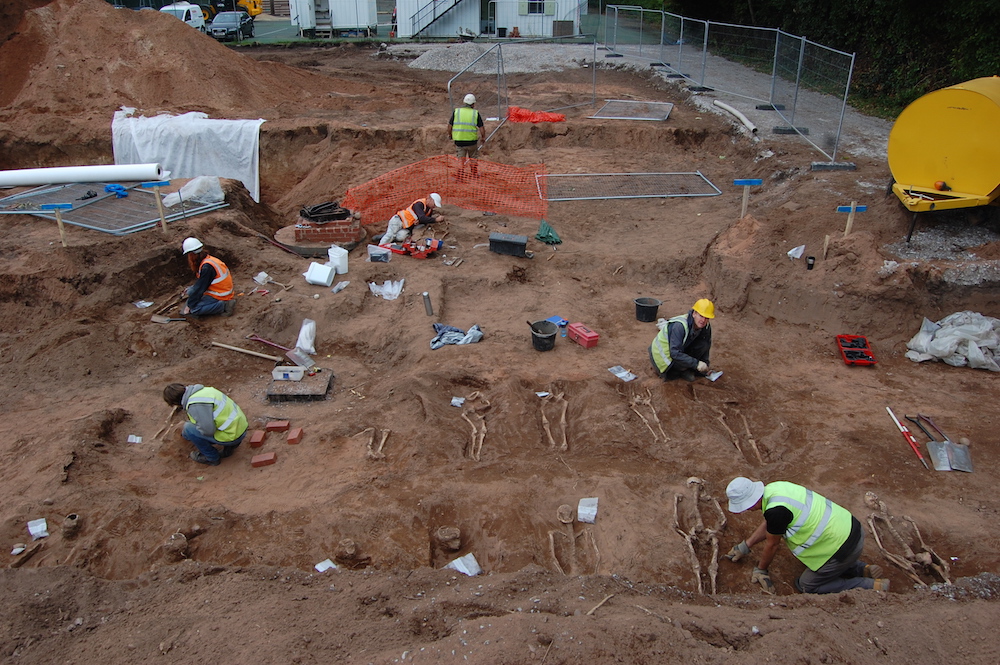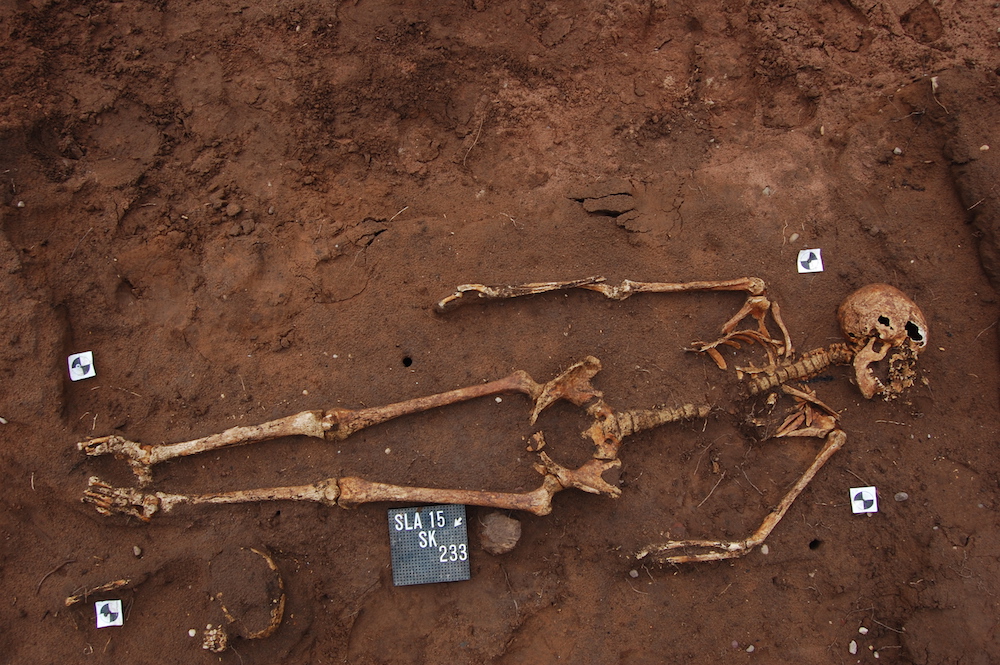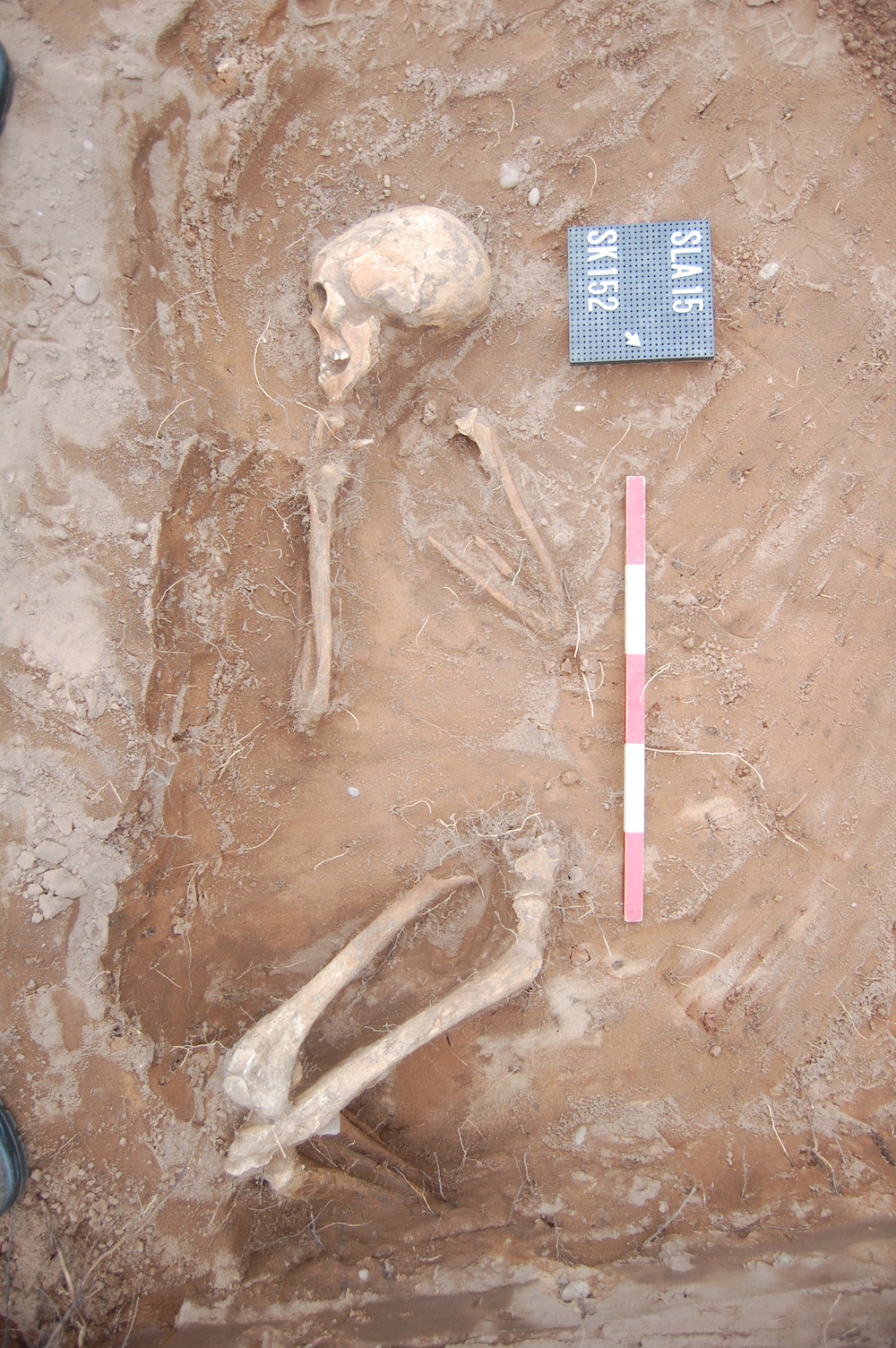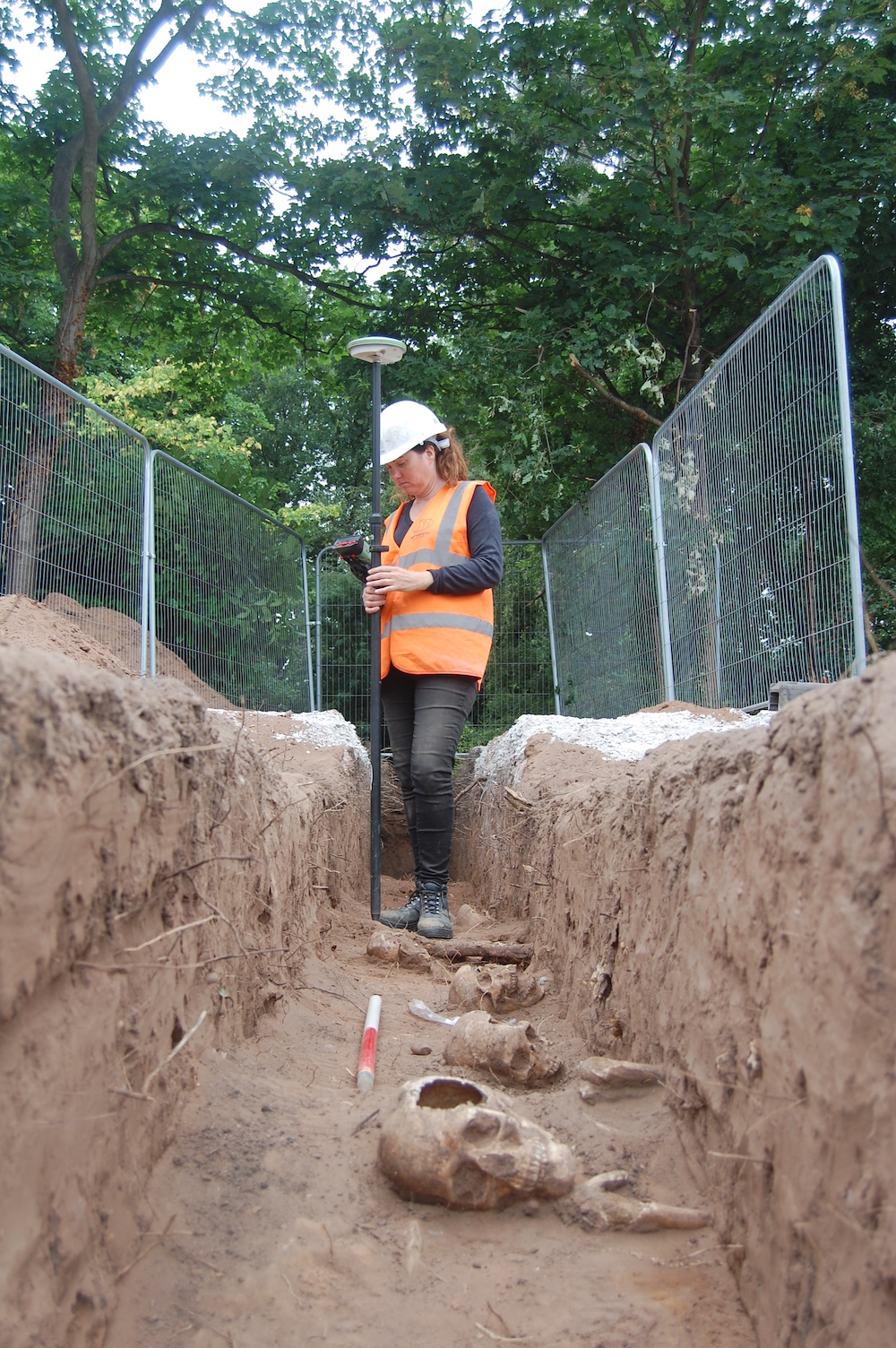Photos: Medieval Skeletons Unearthed Near Saint's Tomb in England
Archeologists unearthed about 50 shallow medieval graves near a 12th-century cathedral in England. The acidic soil hasn't been kind to these individuals — whose remains are now badly deteriorated — but archeologists plan to study each skeleton so they can identify its sex, approximate age and whether their bones have preserved evidence of any injuries or maladies. (Photo credit: Archaeology Warwickshire | Warwickshire County Council) [Read the full story on the medieval graves at Lichfield Cathedral]
Rows of graves

Archaeologists found the shallow graves during a construction project in August. The graves are relatively shallow — just about 1.6 feet (0.5 meters) below ground.
Gritty excavation

Archaeologists excavate a grave near Lichfield Cathedral. Most of the remains of the people in the graves show that the individuals were buried lying on their backs.
Seeking St. Chad

It's likely the people buried in these graves were making a pilgrimage to see St. Chad, a famous seventh-century Anglo-Saxon man of the church who founded the monastery at Lichfield and served as its abbot and first bishop, according to the Encyclopedia Britannica. He also is credited with converting the ancient English kingdom of Mercia to Christianity, the Encyclopedia Britannica said.
Get the world’s most fascinating discoveries delivered straight to your inbox.
After St. Chad died of plague in A.D. 672, people reported miracles happening at his grave. The pilgrims may have journeyed to see the relics at his tomb, said Stuart Palmer, the business manager at Archaeology Warwickshire.
Outside the gates

The individuals were buried by an almshouse, also known as a poorhouse — a place where patrons could help people with few means. It was located outside of the city gates, which closed at night. That way, travelers could stay at the almshouse even if they arrived after the city closed its gates, Palmer said.
Digging up the dead

Archaeology Warwickshire got a license from the Ministry of Justice to unearth and study the skeletal remains for a period of one year, Palmer said.
Dusting off dirt

People affiliated with Archaeology Warwickshire clean off some of the skulls with toothbrushes and other tools.
Follow Laura Geggel on Twitter @LauraGeggel. Follow Live Science @livescience, Facebook & Google+.

Laura is the archaeology and Life's Little Mysteries editor at Live Science. She also reports on general science, including paleontology. Her work has appeared in The New York Times, Scholastic, Popular Science and Spectrum, a site on autism research. She has won multiple awards from the Society of Professional Journalists and the Washington Newspaper Publishers Association for her reporting at a weekly newspaper near Seattle. Laura holds a bachelor's degree in English literature and psychology from Washington University in St. Louis and a master's degree in science writing from NYU.
